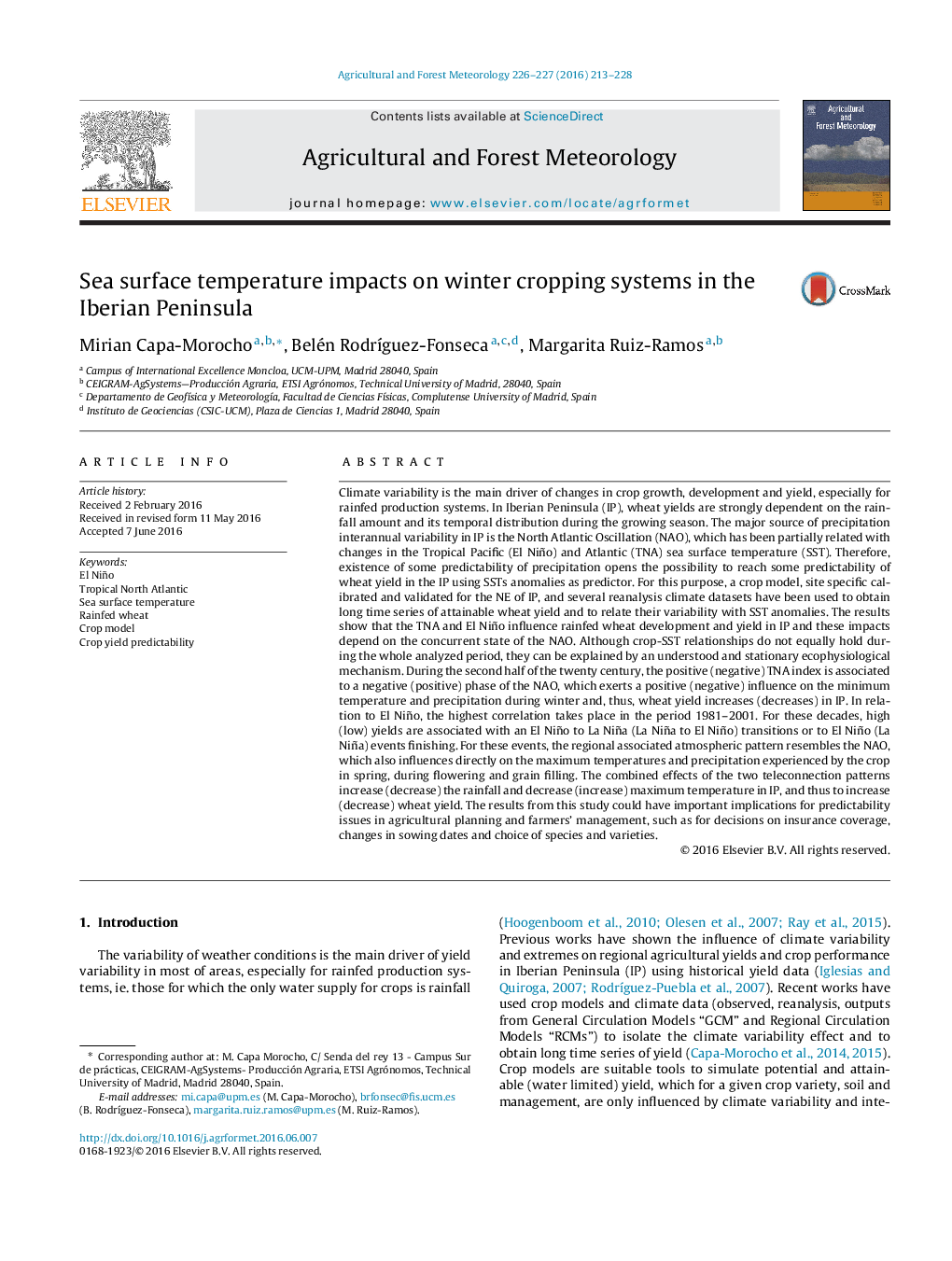| Article ID | Journal | Published Year | Pages | File Type |
|---|---|---|---|---|
| 6536938 | Agricultural and Forest Meteorology | 2016 | 16 Pages |
Abstract
Climate variability is the main driver of changes in crop growth, development and yield, especially for rainfed production systems. In Iberian Peninsula (IP), wheat yields are strongly dependent on the rainfall amount and its temporal distribution during the growing season. The major source of precipitation interannual variability in IP is the North Atlantic Oscillation (NAO), which has been partially related with changes in the Tropical Pacific (El Niño) and Atlantic (TNA) sea surface temperature (SST). Therefore, existence of some predictability of precipitation opens the possibility to reach some predictability of wheat yield in the IP using SSTs anomalies as predictor. For this purpose, a crop model, site specific calibrated and validated for the NE of IP, and several reanalysis climate datasets have been used to obtain long time series of attainable wheat yield and to relate their variability with SST anomalies. The results show that the TNA and El Niño influence rainfed wheat development and yield in IP and these impacts depend on the concurrent state of the NAO. Although crop-SST relationships do not equally hold during the whole analyzed period, they can be explained by an understood and stationary ecophysiological mechanism. During the second half of the twenty century, the positive (negative) TNA index is associated to a negative (positive) phase of the NAO, which exerts a positive (negative) influence on the minimum temperature and precipitation during winter and, thus, wheat yield increases (decreases) in IP. In relation to El Niño, the highest correlation takes place in the period 1981-2001. For these decades, high (low) yields are associated with an El Niño to La Niña (La Niña to El Niño) transitions or to El Niño (La Niña) events finishing. For these events, the regional associated atmospheric pattern resembles the NAO, which also influences directly on the maximum temperatures and precipitation experienced by the crop in spring, during flowering and grain filling. The combined effects of the two teleconnection patterns increase (decrease) the rainfall and decrease (increase) maximum temperature in IP, and thus to increase (decrease) wheat yield. The results from this study could have important implications for predictability issues in agricultural planning and farmers' management, such as for decisions on insurance coverage, changes in sowing dates and choice of species and varieties.
Related Topics
Physical Sciences and Engineering
Earth and Planetary Sciences
Atmospheric Science
Authors
Mirian Capa-Morocho, Belén RodrÃguez-Fonseca, Margarita Ruiz-Ramos,
